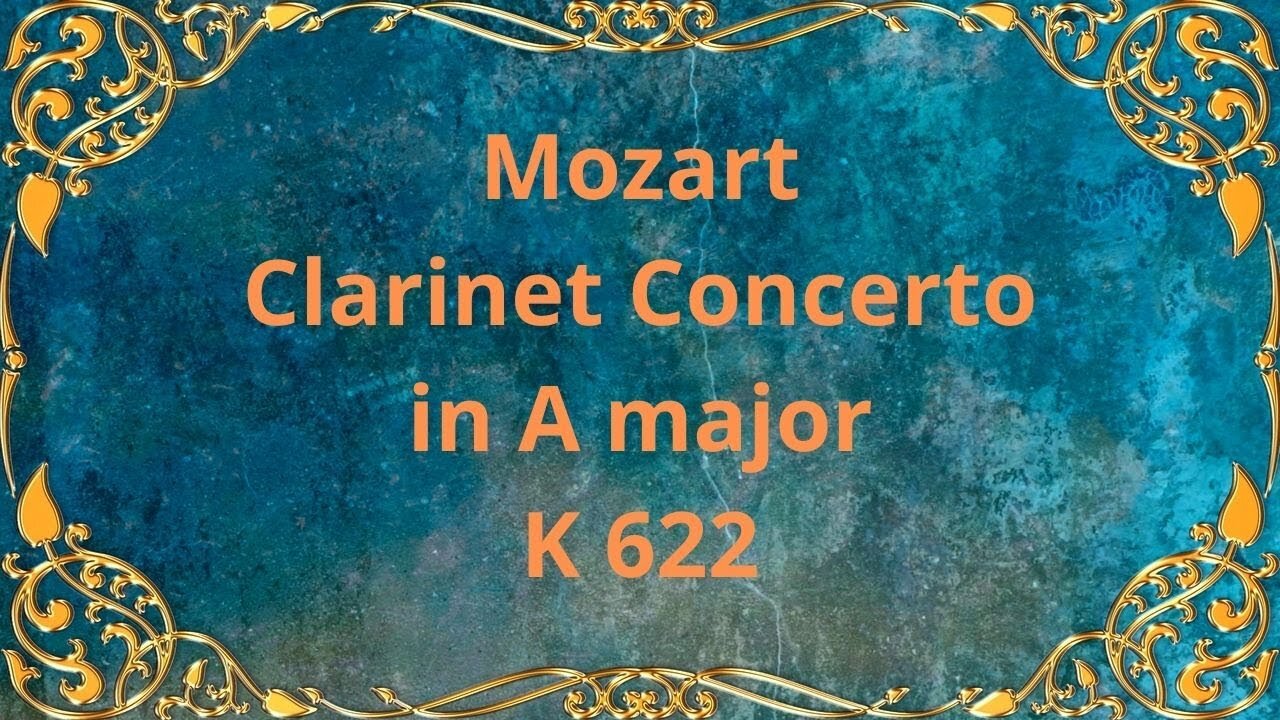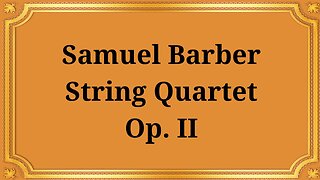Premium Only Content

Mozart Clarinet Concerto in A major, K.622
Mozart's Clarinet Concerto in A major, K.622, is a masterpiece that has captivated audiences since its creation in the late 18th century. This remarkable musical composition showcases Mozart's extraordinary talent and his ability to evoke deep emotions through the mellifluous tones of the clarinet.
Composed in 1791, during the final year of Mozart's life, the Clarinet Concerto in A major reflects the flourishing popularity of the clarinet in the late 18th century. Mozart composed this concerto for his dear friend and clarinet virtuoso, Anton Stadler. The piece was intended to showcase Stadler's exceptional skills on this relatively new instrument, which had only recently gained prominence in classical music.
The concerto consists of three movements:
Allegro: The opening movement greets the audience with a lively and joyful theme, featuring a spirited dialogue between the orchestra and the solo clarinet. Mozart's masterful use of contrasting dynamics and playful melodic phrases creates a sense of anticipation and excitement.
Adagio: The second movement is a sublime and introspective Adagio. This slow and lyrical section showcases the clarinet's expressiveness and its ability to evoke deep emotions. The orchestra provides a gentle accompaniment, creating a sense of serenity and melancholy. Mozart's use of rich harmonies and elegant melodies makes this movement one of the most beloved and poignant moments in classical music.
Rondo: The final movement, marked as Allegro, is a lively and spirited rondo. It brings a sense of exuberance and virtuosity, featuring dazzling runs and intricate passages for the solo clarinet. Mozart's playful melodies and rhythmic interplay between the soloist and the orchestra make this movement an exhilarating conclusion to the concerto.
The Clarinet Concerto in A major has stood the test of time and continues to be cherished by audiences worldwide. Its enduring appeal lies in its remarkable beauty, emotional depth, and technical brilliance. Mozart's unmatched ability to write for the clarinet, coupled with his impeccable craftsmanship, elevates this concerto to the status of a true masterpiece.
Furthermore, the clarinet's warm and expressive qualities make it an ideal vehicle for conveying Mozart's intricate melodies and nuanced emotions. The concerto's contrasting movements, from the vivacious Allegro to the introspective Adagio and the exhilarating Rondo, offer a diverse range of emotions that resonate with listeners.
The profound impact of Mozart's Clarinet Concerto extends beyond the classical music sphere. It has inspired countless musicians and composers throughout history, and its influence can be heard in various genres and styles.
Mozart's Clarinet Concerto in A major, K.622, remains an iconic work in the realm of classical music. Its historical significance, musical structure, and timeless appeal continue to captivate audiences, both seasoned classical music enthusiasts and newcomers alike. This masterpiece stands as a testament to Mozart's genius and serves as a reminder of the profound beauty that can be created through the harmonious collaboration of composer, performer, and instrument.
1. Allegro 00:00
2. Adagio 11:34
3. Rondo. Allegro 17:44
#classical_music #Mozart #Clarinet_Concerto
-
 16:45
16:45
Classical music_Music Inspiration
5 days agoSamuel Barber String Quartet, Op. II
512 -
 LIVE
LIVE
TimcastIRL
46 minutes agoTrans Shooter Targets Catholic Kids In Mass Shooting, Leftists Reject Prayers | Timcast IRL
23,923 watching -
 LIVE
LIVE
SpartakusLIVE
2 hours ago#1 Birthday Boy Celebrates with MASSIVE and HUGE 4.8-Hour Stream
320 watching -
 1:13:28
1:13:28
Glenn Greenwald
2 hours agoGlenn Takes Your Questions on the Minneapolis School Shooting, MTG & Thomas Massie VS AIPAC, and More | SYSTEM UPDATE #506
25.9K17 -
 LIVE
LIVE
Barry Cunningham
1 hour agoBREAKING NEWS: PRESIDENT TRUMP THIS INSANITY MUST END NOW!
7,375 watching -
 LIVE
LIVE
Armadillofather
1 hour agoEspionage Action in the Den! | Metal Gear Solid Delta | You being here means so much!
75 watching -
 LIVE
LIVE
ABD
1 hour agoCyberpunk 2077 | EP 2 - The Opening Act Pt.2 | 4K UHD
19 watching -
 11:11
11:11
Michael Button
9 hours agoMy Joe Rogan Experience: Behind the Scenes
1711 -
 LIVE
LIVE
Charlotte Winslow
5 hours agoplaying GTA 5 for the First Time Ever in 2025 | OPEN WORLD WEDNESDAY
34 watching -
 LIVE
LIVE
Dragoon_B
2 hours agoDragoon - Counter Strike - Noob to Pro Grind
43 watching